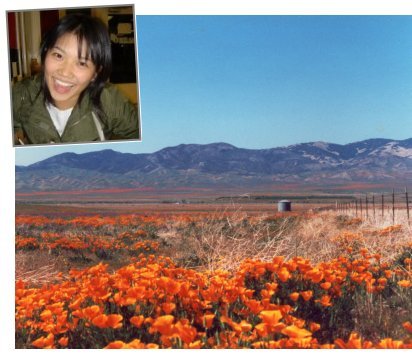

|
| email me ISL media page | home | |

| ||
|
Multiculturalism: Real, False and Fluid  Novel deals with the confusion at the heart of multiculturalism
Novel deals with the confusion at the heart of multiculturalism
There’s a confusion at the heart of multiculturalism, says Nobel prize winner Amartya Sen, one that he seeks to clarify in his new book, Identity and Violence: An Illusion of Destiny. Indian-born but a British resident since his university days, Sen says there’s a critical distinction between true multiculturalism, which encourages a mixing of cultures, with what he terms “plural monoculturism,” a false variant in which various cultures reside side-by-side but never mix. In a recent essay in The New Republic, Sen writes: “If a young girl in a conservative immigrant family wants to go out on a date with an English boy, that would certainly be a multicultural initiative. In contrast, an attempt by her guardians to stop her from doing this is hardly a multicultural move, since it seeks to keep the cultures separate.” But alleged multiculturists, Sen observes, loudly defend such restrictions in the name of honoring traditional cultures—as if, he writes, “the cultural freedom of the young woman were of no significance whatsoever.” Multiculturalism, he concludes, “cannot override the right of a person to lead a socially non-conformist life.”Sen is not alone in addressing the multicultural tensions within the immigrant experience; recent fiction is chockablock with tales of daughters rebelling against arranged marriages and the other restraints which traditional cultures attempt to impose on their Americanized young. But what about those Americans for whom “plural monoculturism” isn’t even a choice—those whose bloodlines have already mixed ethnicities, religions and cultures? They face, says Berkeley, Calif.-based author Charles Smith, another form of multicultural confusion. “Which group do you identify with when you have four or five different heritages in your veins?” Smith, whose own family has joined African-American, Asian-American and Mexican-American heritages, says that Sen’s uncompromisingly individualistic view of multiculturalism is the essential message of his novel, I-State Lines, which is being published by The Permanent Press (New York) in April, 2006. Though Smith’s book is a fictional account of two young friends, one part-Hawaiian and the other Anglo-Hispanic, working their way across the U.S., many of their experiences—of feeling that they don’t belong, of rebelling against the expectations of their family, and of finding trust and friendship in each other’s unsettled identity—come largely from his own friends and family. “Identity in mixed-heritage America is a ‘do-it-yourself’ project,” Smith says, “one with obstacles unfamiliar to monocultural people. You may experience some of the prejudice faced by minorities, but gain little of the strengths of a single cultural identity. You may be accused of not being black enough, or Asian enough, or objectified as an ‘exotic’ who doesn’t quite fit expectations. It falls to each mixed-heritage person to forge their own identity, and to explore their own history.” Artist/author Kip Fulbeck, whose upcoming photographic book, Part Asian, 100% Hapa, will be published in April, 2006, has posted a series of photos of Hapas, which broadly means “of mixed racial heritage with partial roots in Asian and/or Pacific Islander ancestry,” on his website, www.seaweedproductions.com. Fulbeck, part-Asian himself, calls the series the Hapa Project, and each anonymous subject has written comments about identity, prejudice and individuality to accompany their photo. One man of Japanese-Russian Jewish heritage writes, “The reason (identity) is hard is because I’m used to defining myself, and being defined by others, mostly by what I’m not. I am a father. All other claims to individuality seem fluid or dependent on context. Mainly it seems that I am what others are not. Is that Hapa enough for you?” As America grows ever more diverse and multicultural, Smith sees a uniquely positive role for those of multiple heritages. “The diversity others observe on the street, they experience within,” he says. “By stretching the bounds of conventionality, they bring something new to the nation and to each group they have a foot in. This cross-cultural understanding enables Hapas to cross traditional cultural boundaries and bring new insights and innovations to bear.” The dynamic nature of a diverse, culturally fluid population has even been identified as the key factor in global competition for resources, brains and creativity. Journalist and author J. Pascal Zachary’s book, The Global Me, argues that “diversity defines the health and wealth of nations.” In Zachary’s view, monocultures are unable to generate the same level of innovation and creativity as multicultural nations and people. The cultural fluidity of mixed-heritage people, whom Zachary calls “Cosmopolitians,” allows them to work with a wide range of people from around the globe and to draw connections and insights which would simply not occur to those from monocultures. Smith says it’s an exciting, if poorly understood, benefit of America’s millions of mixed-heritage citizens. “While my characters are exploring America and American identity, they’re also shaping America’s identity—and for the better.” (800 words) I-State Lines publication date: April 2006 Publisher: THE PERMANENT PRESS 4170 Noyac Road Sag Harbor, New York, 11963 phone: 631-725-1101 / fax: 631-725-8215 e-mail: info@thepermanentpress.com web site: www.thepermanentpress.com All content and coding copyright © 2006 by Charles Hugh Smith, all rights reserved. The right to reprint or adapt this feature story is expressly granted to professional journalists working in any media or language. |
||
| email me ISL media page | home |